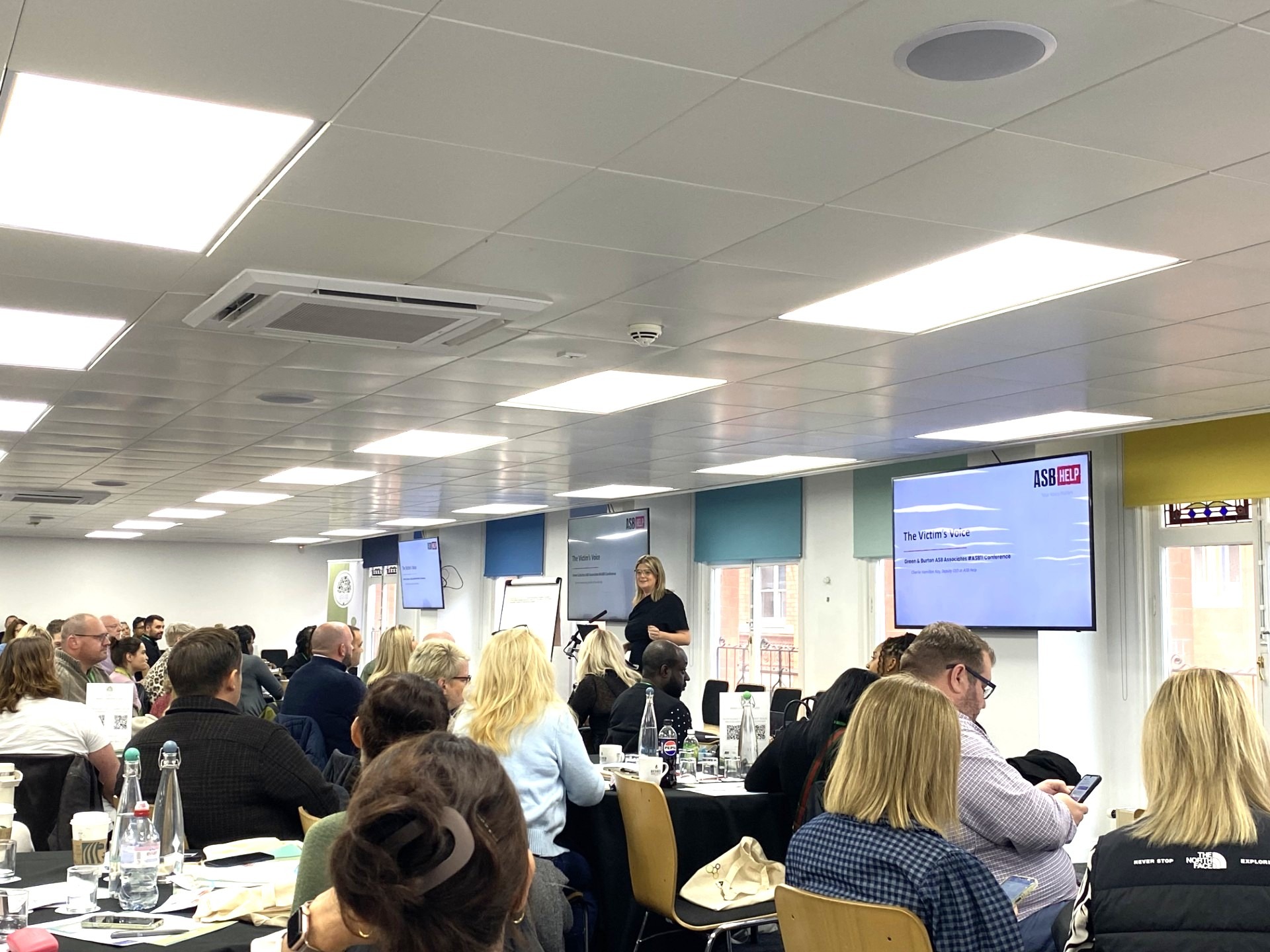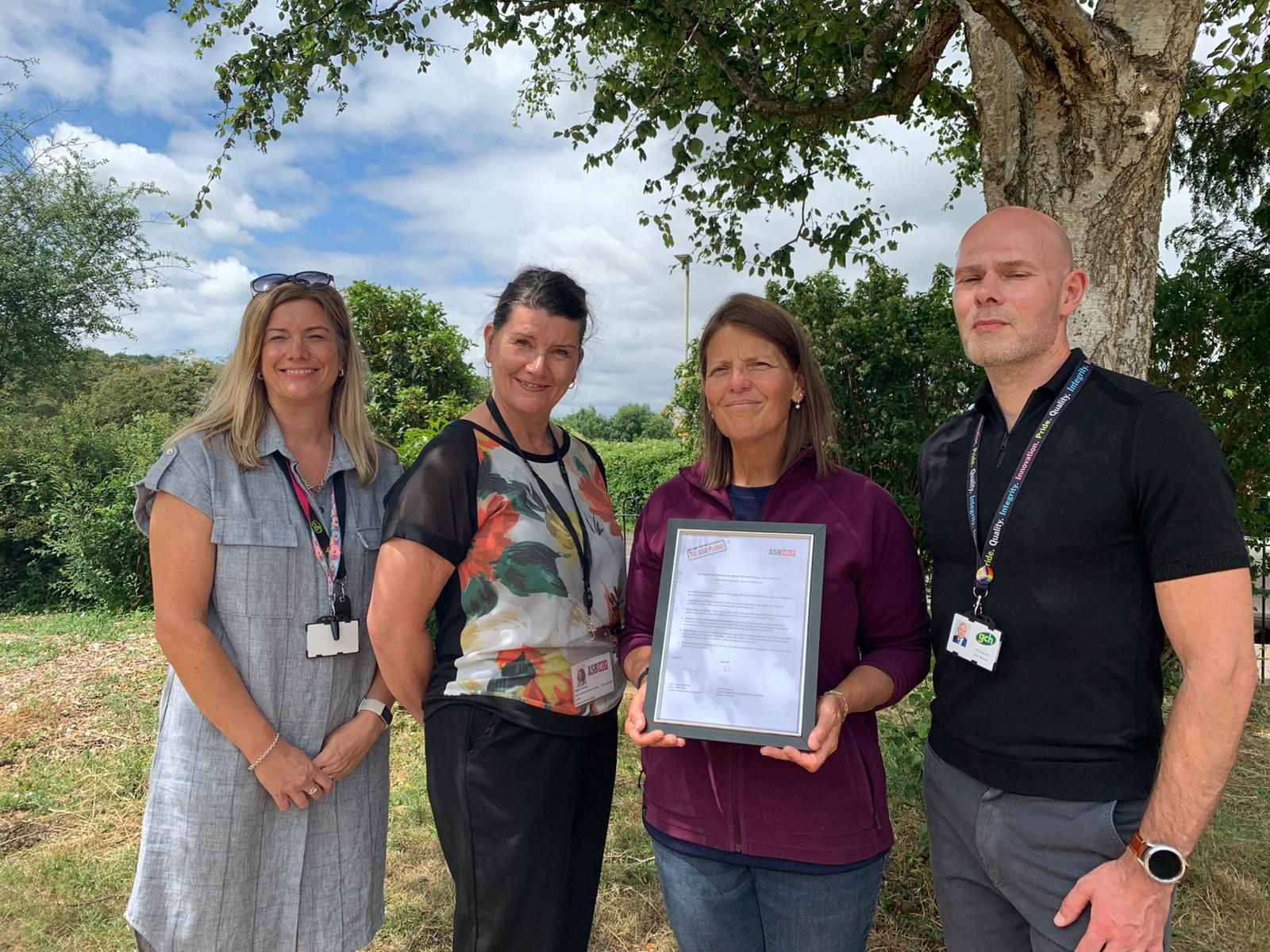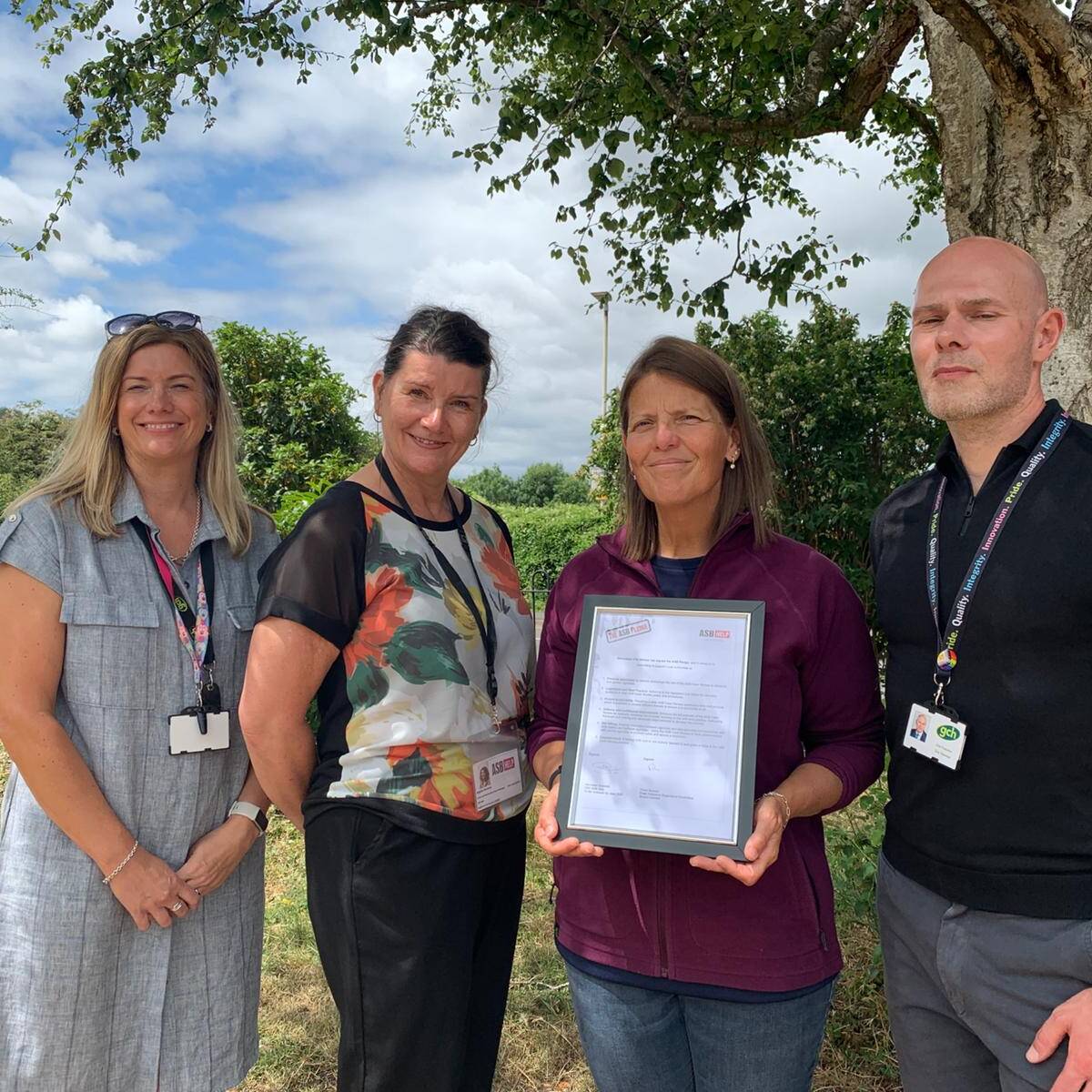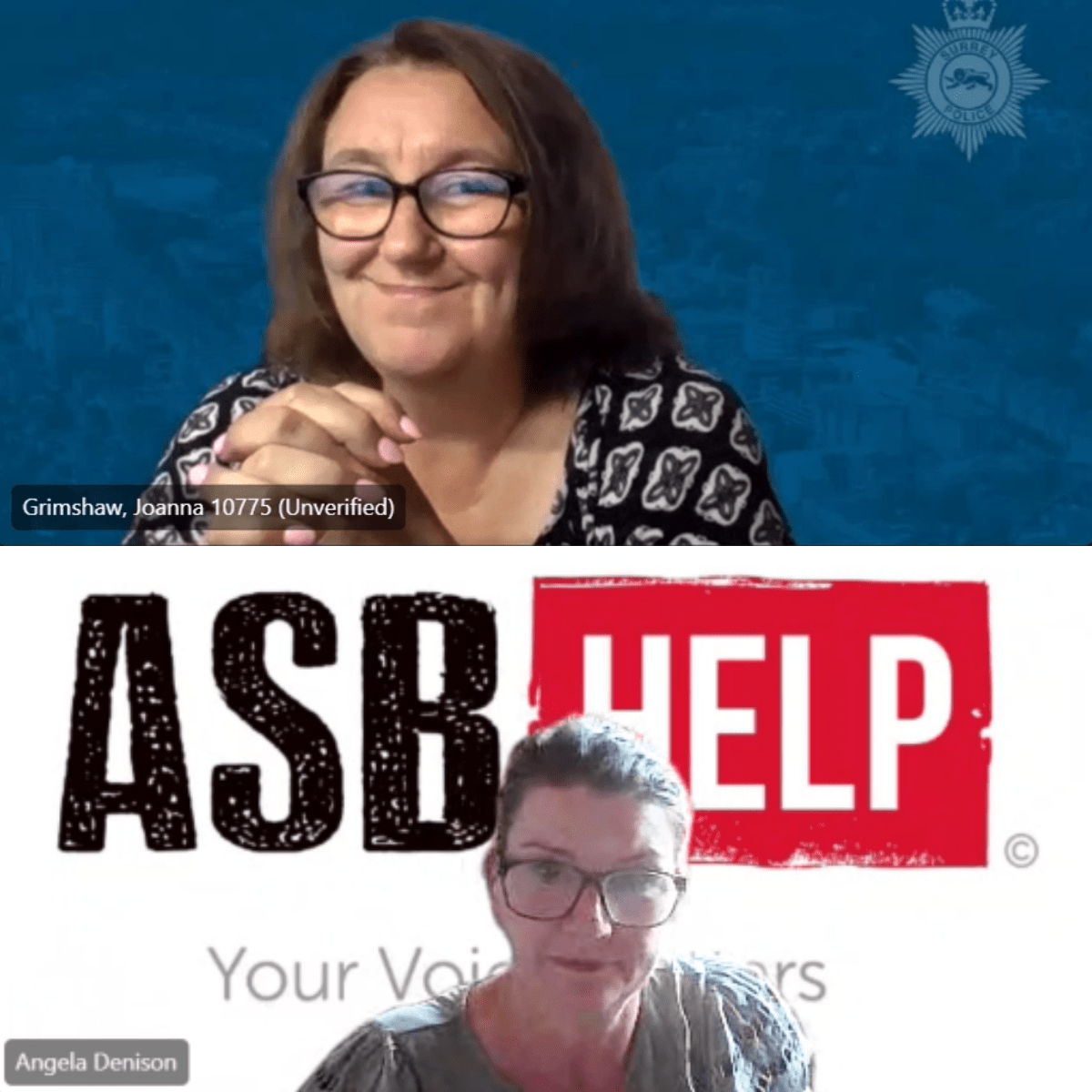Understanding anti-social behaviour during the Christmas season
Introduction
As is the case every year, Christmas is fast approaching. Whilst many of us look forward to the celebrations and time with loved ones, it’s important to remember that not everyone feels this sense of excitement. For some people in our communities, Christmas brings increased worry due to the potential risk of anti-social behaviour (ASB).
In this blog, we will explore the types of ASB which may be more commonly seen at this time of year and explore the reasons behind these seasonal patterns. We’ll also share practical steps that victims and communities can take to stay safe during the holidays.
What types of ASB might increase at Christmas time?
Christmas time may bring about the following anti-social behaviour:
- Alcohol-related public disorder
- Noise nuisance e.g. from neighbour parties
- Retail related ASB e.g. abuse towards shopworkers
- Transport related ASB e.g. rowdy behaviour, vandalism, harassment of passengers
- ASB perpetrated by youths on Christmas break e.g. loitering and intimidation (even if unintentional)
Why are these behaviours seen at Christmas?
There are multiple reasons why we might see these types of behaviours at Christmas:
- More people are out in public places – you only need to look to events such as Christmas Markets taking place across the country to see how the festive period draws people into public places in droves. This increase in traffic grants more opportunities for friction to occur, especially when alcohol is involved, which brings us to our next point…
2. Higher alcohol consumption – Drinkaware found that 64% of UK drinkers intended to drink more over Christmas in 2024 than they usually did throughout the year. Research shows that alcohol consumption is linked to increased risk of anti-social behaviour perpetration. Naturally, the festive period may therefore hold risk of ASB taking place due to increased alcohol consumption.
3. Social/mental health stressors – The Christmas period can bring increased stress, from financial strain to relationship difficulties. Coupled with the reduced hours/closure of some support services over this period, tensions may rise. This could lead to increased risk of domestic-related anti-social behaviour like shouting and arguing.
What are local agencies doing to prevent ASB and protect communities?
Over the years we have seen local agencies like police forces design specific Christmas ASB/Crime prevention plans to protect communities during this period.
For example, this year, Greater Manchester Police (GMP) have launched Operation North Star which is in line with the government’s ‘Winter of Action’ plan, which is similar to their recent Safer Streets Initiative.
GMP stated:
“We’re backing our frontline officers and partner agencies to be visible and proactive – preventing anti-social behaviour and crime and making our neighbourhoods places where people feel confident walking home, enjoying time with family and friends, and shopping locally.”
What is the ‘Winter of Action’ plan?
Following the Safer Streets Summer Initiative, the government has developed a similar winter plan in hopes of “keeping the momentum going and to tackle the unique challenges of the festive season”.
This will take place between 1st December 2025 and 31st January 2026.
The key themes at the centre of this initiative include:
- Retail crime
- Street crime and anti-social behaviour
- Night-time economy safety and violence against women and girls
What can we do to keep ourselves safe this Christmas?
We understand that those most vulnerable in our communities may be concerned by the risk of ASB at Christmas time. We have compiled a list of ways to keep yourself safe this Christmas, so that everyone can enjoy the festive season:
- Stay aware in busy public places – Simply being aware of your surroundings whilst in crowded areas can help you to avoid potential ASB.
- Plan safe travel routes – make sure to stick to well-lit areas and travel with others if possible. This will reduce your exposure to ASB hotspots which are likely to be poorly lit streets or late-night transport.
- Manage alcohol consumption – as we’ve discussed, alcohol can fuel a lot of Christmas time ASB. By managing your own limits, drinking water between alcoholic drinks and looking out for friends can reduce the risk of getting caught up in disorderly situations.
- Report ASB ASAP so local agencies can respond before behaviour escalates – If you see or experience ASB, make sure to:
- Call 101 for non-emergencies
- Dial 999 if you feel threatened or in danger
- Report to local agencies like your housing provider and council
- Be considerate of others – even small gestures can help to prevent tensions from growing into ASB:
- Keep music at a reasonable level
- Let neighbours know if you are hosting a party or friends
- Manage parking considerably
Visit CrimeStoppers’ website for more useful tips for staying safe when out at Christmas.
Conclusion
Everybody deserves to enjoy the Christmas season. While some level of anti-social behaviour is inevitable, taking responsibility for our own actions and supporting one another as a community can help prevent issues from escalating. By working together, we can ensure the holidays remain safe and enjoyable for all.
Police and Crime Commissioners to be scrapped: What will this mean for ASB?
The government have announced today that they will be scrapping Police and Crime Commissioners (PCC’s) with their roles being absorbed by existing mayors and council leaders by the end of 2028.
The government have said that this will save taxpayers at least £100 million and help to fund more frontline officers to tackle crime and anti-social behaviour.
The PCC’s role was implemented in 2012 and are responsible for setting annual budgets, appointing chief constables, creating policing plans, and holding police forces accountable for adhering to this plan. However, the Home Office state that public awareness and engagement with PCC’s has been very low.
Therefore, they have decided to pass on the PCC’s duties to local mayors or council leaders, which will take place at the end of the commissioners’ terms in 2028, so that measures to cut crime and anti-social behaviour are considered as part of wider public service like education and healthcare.
Home Secretary, Shabana Mahmood states:
“The introduction of Police and Crime Commissioners by the last government was a failed experiment.
I will introduce new reforms so police are accountable to their local mayoralties or local councils. The savings will fund more neighbourhood police on the beat across the country, fighting crime and protecting our communities.
I would like to recognise the efforts of all current and former Police and Crime Commissioners and thank them. These individuals served their communities and will continue to do so until they have completed their current terms.”
Emily Spurrell, Chair of the Association of Police and Crime Commissioners (APCC), said:
“On behalf of our communities we are deeply disappointed by this decision and the lack of engagement with us.
For more than a decade, directly elected Police and Crime Commissioners have transformed policing accountability and delivered essential support services for victims of crime. Having a single, visible local leader – answerable to the public – has improved scrutiny and transparency, ensuring policing delivers on the issues that matter most to local communities.
Whatever follows in our place must be rooted in local and national accountability, clear and identifiable leadership and connected to local communities. The public deserve nothing less.”
Read Emily’s full statement here
So, what will this mean for anti-social behaviour?
As with any major structural change, it is difficult to predict the long-term impact at this stage. At ASB Help, we will continue to monitor developments closely, reviewing information and feedback from both victims and practitioners as it becomes available, to understand how this change may affect those experiencing anti-social behaviour.
We have valued our long-standing relationship with the Association of Police and Crime Commissioners (APCC) and hope that those leaving their commissioner roles will continue to champion the rights and voices of ASB victims in their future work.
Since this transition is not expected to take place until 2028, we will share further updates and guidance nearer the time to help victims and practitioners understand what to expect and how to prepare.
Stacy's story: A real victim experience
Introduction
We recently spoke with a victim, Stacy (name changed for privacy), about their experience of anti-social behaviour (ASB) and the difficulties they faced when seeking help from local agencies.
Their story offers valuable insight into the real impact of ASB and highlights where agency responses can be strengthened to better support victims.
Please note: This account includes discussion around sensitive subjects like suicidal ideation, which may be distressing to some individuals.
Table of contents
Overview of Stacy’s case
Stacy and her family have been experiencing anti-social behaviour from her neighbour for over four years. Over time, this has escalated, and behaviours have included:
- Knocking Stacy’s bins over and stapling messages to their fence.
- Blocking Stacy’s driveway for hours.
- Harassing Stacy’s daughter by circling her car with a friend whilst she was inside of it so that she could not leave to go into her house.
- Intimidation and antagonistic behaviour e.g. recording the family, including their daughter, coming home from school/work every day for three weeks from his van whilst pointing and laughing.
- Making offensive hand gestures towards Stacy’s house whenever they go past.
- Making false allegations to Stacy’s husband and son’s work.
- Vehicle repairs e.g. full vehicle strip downs, excessive noise, sparks from tools causing damage to Stacy’s car.
- Boasting to another neighbour about getting Stacy’s husband ‘done’.
- Racial abuse towards Stacy’s husband including saying he had “killed people in Afghanistan like him”.
If you’re struggling with anti-social behaviour, find advice on different types of ASB on our Victim’s Hub.
What happened when they reported this to agencies?
Stacy’s first port of call was to report these incidents to her housing association via email. However, as Stacy was working for the housing association at the time, the housing team leader approached her in work and said that they could not accept her report as it was a ‘conflict of interest’. Stacy felt like her work was competing with her rights as a tenant:
“Just because I work for you, doesn’t mean that deflects my rights as a tenant.”
Nonetheless, Stacy followed local processes:
“They asked me to get as much evidence as you can. We’ve provided everything they’ve asked for. We’ve followed the housing policies and procedures.”
At this point, Stacy was grateful that these agencies were “on board”. However, when Stacy felt that little to no action was taken, she began to feel let down:
“It’s almost like they’ve encouraged us to get such evidence because of the promises they’ve made saying they will get to the bottom of it. They will sort this out. If they have to, they’ll get an injunction.”
Stacy would also try and pursue an ASB Case Review, but this application was declined.
Stacy then felt trapped in limbo as she states:
“The housing waits for the police to take action, and the police wait for the housing.”
Stacy points out that regardless of whether police take action, the housing association have a duty to address tenancy breaches.
After repeated incidents of ASB and little effective action from agencies, tensions continued to rise. One day, when their daughter came home upset after being filmed by the neighbour, Stacy’s husband confronted him, telling him to stop recording his wife and daughter and calling him a “f*cking twat.” The neighbour, who was already filming, used this footage to make a report to the police against Stacy’s husband.
Police would serve Stacy’s husband a section 5 and tenancy warning:
“It’s really sad because they didn’t take into account the three weeks of me emailing the police and housing begging for help.”
It would be the Out of Court Officer that would encourage them to make a complaint to the police force professional standards department.
Stacy would go on to do just this, as well as complaining to the Housing Ombudsman given the way both agencies were handling her case.
The Housing Ombudsman would uphold her complaint and find failings on the part of the housing association when dealing with Stacy’s reports of ASB and complaint handling.
Stacy’s housing association would then admit to her that they had not been recording all of her reports/emails on their system for the last 12 months.
Stacy said:
“That lack of action just further emboldened the neighbour to continue his behaviour.”
Stacy would continue to wait for action to be taken, with her housing association asking for 28 days to implement actions. Stacy would wait 56 days and states she began to give up hope.
“During that whole process, there’s still all these incidents happening.”
Meanwhile, Stacy states she was open to receiving a mutual Community Protection Warning (CPW):
“The fair thing for the housing or police to do would be to serve us both a Community Protection Warning.”
“Not only is it challenging and putting up with the behaviour of the neighbour, it’s challenging each agency to enforce their own policies and procedures. I shouldn’t, as a tenant, be having to tell them how to do their job.”
The impact
The impact of these situations sadly left Stacy feeling suicidal.
“I’m obviously here to tell the story, but it wasn’t just as a result of his behaviour and what we were subject to. This onus was also on the housing and the police for failing to recognise the harassment, the alarm, the antagonizing distress that we were going through.”
“It affected my relationship with my husband, with my daughter. There would be occasions where I couldn’t stay here and had to go and stay at my mums.”
“It’s a topic that people think, unless you’ve got the evidence, we can’t do anything. But actually, sometimes you just need to look at the repeat pattern of people’s behaviour and the impact it has on people’s lives.”
Thankfully, Stacy reached out to her GP and was referred to therapy, which she says has helped.
“We still have a long way to go, but I’m sure that if I continue to challenge, that we will see justice.”
If you are being impacted by anti-social behaviour, please make sure to reach out to services for emotional support.
Conclusion
Stacy’s case is an example of not only the impact that ASB can have, but also the impact that agencies can have on victims when they do not act, or do not provide early intervention.
Quarterly Newsletter - October 2025
Our quarterly newsletter is here!
This quarter’s newsletter covers what we have been doing over the past couple of months.
In this newsletter we discuss: ASB Help updates, government updates, victim and practitioner testimonials.
Thank you for everyone who continues to support our work here at ASB Help!
Longer nights and anti-social behaviour
Introduction
Every year after the summer solstice in June, the nights start to get longer and the days shorter.
This natural and ancient cycle brings some beautiful sights, but it also has its downsides – many people feel more afraid of crime and anti-social behaviour during the darker months.
Table of contents
Nighttime and ASB
In some parts of the country, local councils have recently decided to turn off streetlights in towns and villages after 11pm to save electricity.
Local residents have raised complaints to their councils about this, citing the absence of light as creating an atmosphere where criminal activity is more likely to occur and correspondingly, residents feel more likely to become victims of these crimes or anti-social incidents.
It’s true that most violent incidents linked to the nighttime economy happen on weekends, especially between 10pm and 6am.
These hours, often called “nighttime economy hours,” can involve large crowds in areas with bars, pubs, and nightclubs, where alcohol and sometimes drugs play a role.
Take a look at the Local Government Ombudsman’s report on ‘Approaches to managing the nighttime economy’ for more info.
The lack of lighting not only makes the area feel more intimidating but also creates opportunities for offenders to hide and target unsuspecting victims. Situations like this highlight the vital need for well-planned and effective lighting in urban areas, especially where pubs, clubs, and a busy nighttime economy are central features.
This also shows the importance of collaboration between the planning sectors within local authorities, law enforcement and investigation from the police and local business improvement groups ensuring trade and commerce provide as safe a platform for their customers as possible.
The impact
There are very similar ways in which victims of anti-social behaviour and crime can feel the impact of reduced visibility/lighting during late hours.
Perpetrators can also be affected by this but of course in a different way.
When lighting is poor, victims feel more vulnerable because they cannot easily identify who might be responsible for the ASB, and investigators such as the police or local authorities may also struggle to gather clear CCTV evidence. At the same time, perpetrators feel more confident and comfortable taking advantage of these conditions.
However, there are now numerous excellent CCTV units for commercial and private use that can provide high quality imagery for just such occasions, throughout a 24-hour period. This measure together with adequate security or street lighting can provide a deterrent and therefore a source of comfort for the victim.
Rural vs suburban
It is often perceived that people who live in more rural areas feel more at ease from incidents of crime and ASB. However, in a think tank event at Lincoln in 2022 various delegates actually flipped this interpretation and cited that despite large gatherings of people and numerous drinking establishments being less common if not non-existent in villages, the very thought of an incident occurring was easily as stressful and in fact, to some (particularly those with vulnerabilities) was actually even more concerning.
The reason for this was mainly to do with geography, and the fact that any emergency response would in all probability take more time to reach the victim or to potentially apprehend the offender in adequate time. This research was revealed during the knife crime initiative called Think Sharp in Lincolnshire.
Transversely, the higher number of incidents per capita in towns and cities made this a source for concern for residents in this demographic. Both sets of people felt that the impact of it occurring at nighttime further exacerbated the impact and fear.
Conclusion
So, we can see that with adequate design and collaborative considered planning, the impact of nighttime reduced visibility can be mitigated to some degree and can aid detection as well as reducing potentially harmful incidents to help restore/maintain public trust and confidence.
Government updates statutory guidance for ASB powers
Introduction
The government has updated their website to reflect changes to the statutory guidance on anti-social behaviour powers for frontline professionals.
These changes have been made following the recommendations of the Victims’ Commissioner’s 2024 report: Still living a nightmare: Understanding the experiences of victims of anti-social behaviour.
These updates were announced back in January 2025 and have now been implemented. These changes largely relate to the ASB Case Review process.
Below, we will cover the major changes in this update.
Single point of contact
The Home Office have made it clear in the updated guidance that a Single Point of Contact (SPoC) should be assigned to victims. The SPoC should keep the victim informed, which will ensure victims feel supported throughout the ASB Case Review process.
“Relevant bodies should keep the victim updated throughout the Case Review process and should ensure that the victim has a single point of contact to liaise with throughout the ASB Case Review process to keep them updated, including notifying them when and why a case is going to be closed.”
Promotion and accessibility of the ASB Case Review procedure
Given that it has been found that only 80% of victims know what the ASB Case Review is, we are grateful to see more guidance on the promotion of this tool.
The Home Office have advised that:
“Agencies must make every effort to clearly explain the ASB Case Review process to all victims who make a second report of ASB in a six month period regardless of if they meet the threshold criteria. For example, this could include signposting information to the victim in order for them to be aware of the Case Review mechanism.”
Thankfully, the Home Office have also introduced guidance around making the ASB Case Review sufficiently accessible to victims:
“It is important that the Case Review is accessible and that victims have various methods to apply for one. For example, where the victim might not have access to the internet or a smartphone, they may prefer to make an application over the phone or may need assistance with making the application.”
Independent chair
In our previous FOI, we found that only 36% of areas invited an external organisation to chair the ASB Case Review.
So, we are glad to see that the government has expanded their guidance on the implementation of independent chairs in the ASB Case Review process:
“Case review meetings should be chaired by an appropriately trained independent person who has sufficient knowledge of ASB procedures and legislation… The independent chair would also provide a fresh perspective on the case, the action already been taken and potential further action. This may for example be someone from within the Community Safety Partnership who has not had previous involvement in the case or someone from a neighbouring council.”
However, it’s important to note, from our conversations with victims, we know that some victims perceive a bias when ASB Case Reviews are chaired by individuals within the team. Regardless of whether the appointed chair has had prior involvement, some victims may perceive a bias as the chair is still a ‘colleague’ of the parties involved.
Victim inclusion and support
The ASB Case Review was designed to give victims a voice. So, we are really glad to see that there is an increased focus on victim inclusion and keeping the victim at the heart of the process.
For example, the new guidance states:
“The relevant body should allow the victim to choose their level of involvement and always invite the victim to attend a section of the case review meeting (in person or virtually) to help members of the panel understand the level of harm and impact the behaviour has had on them… The victim should also be given the opportunity to submit a written impact statement detailing the impact of the anti-social behaviour on them.”
This guidance is more thorough than previous guidance.
Also, regarding the creation of an action plan, the new guidance states:
“The relevant bodies should consult with the victim on the action plan but be clear on expectations before it is formalised so that they can understand the proposed actions and can share their own perspectives on the proposed plan’s effectiveness in addressing their concerns.”
We are pleased to see the addition of this guidance, which considers the victims voice throughout the process, not just during one section of it.
It’s also important to note that the updated guidance has referred to the support anti-social behaviour victims are entitled to under the Victim’s Code:
“In accordance with the Victims’ Code (2023), a person is entitled to support if they have suffered harm as a result of criminal conduct, regardless of whether the incident is formally recorded as a criminal offence or whether charges are pursued. This ensures that victims can access support services even if the behaviour is initially treated as ASB rather than an offence. If the incident has been reported to the police, the victim must be referred to local victim support services. Where it has not been reported, victims should still be made aware of how to access such services independently.”
Anti-social behaviour can be chronic and increasingly detrimental to a victim’s mental and physical health. So, this new guidance could provide some victims with a lifeline.
Conclusion
The updated ASB Case Review statutory guidance marks an important step forward in strengthening the victim’s voice. For too long, many victims have felt overlooked or unsupported when trying to get help with persistent anti-social behaviour. These changes show that progress is being made – thanks to the dedication of victims who have spoken out, and the continued efforts of organisations in the sector who are ensuring those voices are heard.
We know there is still more work to do, for example, we would like to see a clearer appeals process outlined in guidance. Nevertheless, this update is a positive sign that change is possible when victims are placed at the heart of the process. We will continue to champion their experiences, hold agencies to account, and push for a system that truly delivers justice for everyone affected by anti-social behaviour.
Supporting the most at risk: Vulnerability and anti-social behaviour
Introduction
Vulnerability is one of the most significant risk factors in both anti-social behaviour (ASB) and crime.
In truly understanding those in our community that have vulnerabilities, how and why they experience anti-social behaviour and how much it adversely impacts on them, we can start to address the level of risk. When we understand this, we can better manage the risks they face—risks that can affect not only the individual, but the wider community and the professionals responding to these issues.
Incidents involving vulnerable people often include both ASB and criminal behaviour. These cases are usually complex and drawn out, with ASB often being the starting point and escalating over time into more serious crimes. This pattern is not often recognised and so each thematic/incident, is dealt with in isolation. As we have seen repeatedly over the decades, failure to recognise this leads to a perfect storm for incidents where serious harm, suicide or murder can tragically follow.
Over the years, cuts to public services have made it much harder to protect vulnerable people and respond effectively. This reduction in resources has made delivering this vital part of community safety far more difficult than it should be.
What is vulnerability?
The official definition is “the quality or state of being exposed to the possibility of being attacked or harmed, either physically or emotionally.”
In our community, we often think we can pigeonhole the vulnerabilities into categories such as the following:
-
- The elderly
- Those with debilitating illness or physical / mental health conditions
- Ethnicity
- Religion
- Unemployment
- Those who are isolated geographically or otherwise/ live on their own
- Those with young dependents
- Financial insecurity
- Sexual orientation
- Low educational attainment
- Those with addictions to drugs, alcohol and so on
- Victims of domestic violence
- Those whose first language is not English
- Those who have suffered adverse child experiences (ACE)
There are many more of course.
The truth is that anyone can develop vulnerability. Often, we can become vulnerable when we experience trauma, so in the case of ASB victims, this can occur at any time as we all have different capabilities to help us cope with harm. Generally speaking, the more we experience a traumatic event, the more likely we are to develop or harbour vulnerable attributes.
People often have more than one type of vulnerability, which can make everyday life challenging—even before they face issues like crime or anti-social behaviour.
In reality, not only are they more likely to be targeted by an offender, but they are also more likely to suffer a greater impact because of their vulnerabilities. It is also a very valid point that both offender and victim may have at least one of these factors as part of their profile.
Someone without these vulnerabilities is likely to be much less affected, both in how long the impact lasts and how serious it is.
This so-called impact ripple expands outwards from the victim, perpetrator and families to the wider community and also impacts on those engaged in dealing with the cases as they occur.
The impact of detrimental experience
As mentioned above, when someone is a victim of either crime or ASB, they can experience trauma. This can go on to cause problems; emotionally, mentally and physically.
It of course follows that those with pre-existing vulnerabilities, can suffer a greater serious, lasting effects from anti-social behaviour. This grossly affects their everyday lives and makes them progressively more likely to be targeted (perpetrators targeting the vulnerable sometimes ‘enjoy’ the repeated targeting of a particular person who may react adversely towards the offender as they may not be able to simply ignore or ‘brush off’ the incidents, which can become more frequent or severe over time).
Dr. Eric Berne wrote of the bent penny effect which is rather appropriate as a comparison in these cases to demonstrate the impact of ongoing persistent targeting of vulnerable people.
In ordinary circumstances, those without pre-existing vulnerabilities, if they are targeted with ASB are much more likely to simply deal with the (hypothetically) daily incidents as a matter of fact, and report them to the police, council and so on, then carry on with their daily lives.
The impact on them, in this case is comparatively lower.
Using the analogy of each incident generating a penny, this person would simply place each penny on top of another, and life would seem to carry on as normal.
However, using the same approach, the vulnerable person cannot deal with the incident in the same way and instead of generating a flat penny, the subsequent incidents to them are represented by a bent penny, since they are more difficult to process.
This also means that as the incidents follow, the stack of pennies becomes increasingly unwieldy and soon collapses with obvious consequences for the victim.
Other impacts
It’s understandable that some vulnerable victims choose not to report what’s happened to them. This can be because they fear retaliation or feel embarrassed, but it can also be due to communication difficulties or worry that they won’t be taken seriously like other victims.
This means that the vulnerable person may choose to suffer in silence rather than draw attention to themselves. Of course, this can and often does make the situation worse as the perpetrator will feel they have free rein to persist in targeting the person and often this will also become increasingly severe in its nature.
Coupled with organisational dilemmas such as a lack of cohesive working relationships with partners, communication issues and lack of resources, it is clear to see that if left unchecked, the situation could spin out of control.
Potential remedies
If our collective focus is truly on reducing or removing threat, risk and harm to our community, then the budgetary priority should be on protecting those that need help the most.
Failure to do this can lead to the most terrible of circumstances and from an organisational point of view, this also presents a clear and present reputational danger, reducing public trust and confidence in an organisation’s ability to do the job.
It is primarily for this reason, coupled with moral duty, that we need to focus on those who need us most.
To design a system for better awareness of our communities most vulnerable people, we first have to become aware of them.
A positive step to increasing awareness would be through engagement of the key groups we feel are most likely to be targeted. This can be through:
-
- More opportunities to speak with community police and Community Support Officers e.g. Cuppa with a Coppa events.
- Engaging in forums, with key partnerships (NHS etc), in community groups. Linking in with community hubs which actively seek out those hard-to-reach groups could be useful.
- Placing more emphasis and training for support agency workers (including those who have any kind of interaction with vulnerable people) on safeguarding and providing support or signposting to appropriate services.
What we should seek to do is close the gaps that often lead to a vulnerable person being targeted and to ensure the support needed is there with a heightened priority so that the service provided by any agency is of an enhanced harm centred approach.
Learning from the past
In my nearly 40 years of working with community challenges, whenever something has gone badly wrong and people have been harmed, an internal or public enquiry usually follows. In each and every case, the organisation involved promises to learn from the mistakes that led to the incident and assures both the enquiry team and the public that things will change to keep people safer.
However, it is abundantly clear that despite these assurances, the problems, the harm, the murders, still keep occurring and so the two questions that need asking if we are to truly break the cycle are:
Why does this keep happening?
And
What can we do as a society, as organisations, as individuals to stop it and to truly provide for a safer community for everyone?
Risk management in ASB cases
Reducing the risk = reducing the harm.
How do we incorporate risk factors in ASB case management?
To some extent, this is discussed above but the simplest and potentially most effective way of doing this is to invest in networking with our most vulnerable people, getting to know them before they encounter such issues where they are targeted. Noting their risk factors and incorporating them into the tactical policing/community safety plan.
We need stronger connections with community partners and open, ongoing communication to ensure a joined-up, focused approach. This helps improve the care and support given to those most in need—people who are more likely to use services and be at risk of becoming victims.
By doing this, we are being pro-active in our planning, we are not merely reacting to the victim’s predicament when they have already been targeted. We are attempting to be ahead of the game. This could form a geographical outlay, a map of, for example, estates and individuals who are elderly and so on.
This improved approach shifts the focus from targeting offenders to identifying areas or individuals who are more likely to become victims—ideally before anything happens. It’s a proactive way of solving problems, similar to hotspot policing.
This approach should also be used for offenders who may have vulnerabilities too. By listening to their issues, understanding how it affects them, and connecting them to the right support, we can help prevent them from causing serious harm to those who are less able to cope.
Other positive outcomes from this approach could include:
-
- Reduced CSP involvement and officer time.
- An increase in public confidence and trust.
- An increase in community cohesion where so often a lack of this is a causal factor of issues arising in the first place.
Crime and Policing Bill: Our response to call for evidence
Introduction
Back in February, we saw the introduction of the Crime and Policing Bill into the House of Commons. This bill includes the introduction of the highly anticipated respect orders. Since the announcement of the bill, it has passed through multiple stages in its journey to being implemented into law. Currently the bill is in its second reading in the House of Lords.
As part of this process, relevant agencies were asked for their thoughts and feedback on the proposed bill. So, we wanted to share our response to this call for evidence with our readers.
Respect Orders
The new respect orders being proposed in the Crime and Policing Bill are very similar to the current anti-social behaviour injunctions (ASBIs) that police and councils can already apply for. The main difference is in how they are enforced. Instead of the County Court handling both the granting and enforcement of the order, the Magistrates’ Court will now deal with breaches of the order, even though the county court still grants it.
Here are our main points in response:
There’s no clear explanation of when it would be appropriate to apply for a respect order without giving notice to the other person involved. We assume the usual legal rules will apply but this should be made clearer.
We believe official guidance should explain when and how it’s appropriate to make a without notice application, especially for frontline professionals who don’t have legal training.
Respect orders introduce a new criminal offence if someone breaks the order. But this splits the process in two: one court issues the order (County Court), and another court enforces it (Magistrates’ Court).
This raises several concerns:
-
- Delay in enforcement: If someone breaches an order, the case will now go to the Magistrates’ Court, where backlogs could mean long waits. This could leave victims exposed and unprotected.
- No power to vary or extend: The Magistrates’ Court cannot change or extend the respect order – only the County Court can do this after a conviction. That means a second set of court proceedings will be needed, which could add cost, time and more distress for victims.
- Loss of local authority powers: Currently, local authorities can enforce ASBIs, PSPOs, and CPNs themselves. Under the new system, only the police and Crown Prosecution Service (CPS) will be able to enforce respect orders. This could slow down enforcement, add extra costs, and reduce local oversight. We question why councils, who already play a key role in tackling ASB, are being removed from the process.
- Sentencing clarity needed: It’s unclear whether there will be specific sentencing guidelines for breaches of respect orders. Consistency and fairness will depend on this.
- Civil vs criminal penalties: Housing injunctions will still be enforced as a civil matter, with the usual contempt of court penalties. We think it would be better if County Courts and High Courts could issue community-based sentences, and if clear sentencing guidelines were introduced for breaches of housing injunctions too.
We welcome the proposal that a risk assessment must be completed before applying for a respect order.
However, we think further clarification is needed:
-
- Will the risk assessment help professionals comply with other important laws, like the Equality Act or Human Rights Act? Will the guidance confirm that completing the risk assessment is enough to meet those obligations?
- A standard national risk assessment process should be created. This would ensure that all professionals are assessing risk consistently, for both victims and alleged perpetrators, right from the start of a case.
Youth and housing injunctions
Schedule 1 makes a small but important change: it renames existing injunctions under Section 1 as either “youth injunctions” or “housing injunctions”, depending on who they apply to.
A new Section 13A also introduces a requirement for a risk assessment before applying for these injunctions. We hope this process will also help ensure that agencies are thinking about their responsibilities under the Equality Act and Human Rights Act when they apply for an order.
Closure of premises
There are two key changes we support:
-
- More time before court: The time between issuing a closure notice and the first court hearing is being extended from 48 hours to 72 hours. This gives people living in the property a bit more time to prepare a defence if needed, which is a positive step.
- More powers for housing providers: Registered Social Landlords (RSLs) will now be able to apply to close a property they own. We welcome this change, as it gives housing providers more tools to tackle serious anti-social behaviour.
Suggested improvements not yet in the bill
While we support many of the proposals in the bill, there are some additional changes that could strengthen how injunctions and closure orders are used. These aren’t currently included, but we believe they would make a real difference:
Allowing closure orders to be applied for without needing to serve a closure notice first, in cases where there’s no particular urgency to list cases in court, for example, in cuckooing situations. This would let agencies go straight to court without the added step of issuing a notice when it’s not necessary.
When a closure order is made, magistrates should also be able to:
-
- Ban certain individuals from the area around the property, and
- Put protections in place for witnesses – currently, this requires a separate court case, but it would be more efficient and protective if the Magistrates’ Court could handle everything at once.
We’d like to see guidance on how magistrates’ courts manage closure order cases, including:
-
- Deadlines for sharing evidence
- Clear rules on what happens if deadlines aren’t met. This would help speed up cases and make the process fairer for everyone involved.
We think respect orders would benefit from more specific guidance, especially for situations involving:
-
- Street drinking or drug use
- Shop theft, sex work, or begging
- Rough sleeping or street preaching
Guidance would help the courts understand how these behaviours can meet the legal test for anti-social behaviour (i.e. causing alarm, harassment, or distress).
There are currently no official forms for respect orders, youth injunctions, or closure orders in the Magistrates’ Court. Practitioners often have to create their own, which leads to inconsistency. Having clear, standardised forms would save time and reduce errors.
ASB Case Review
We support the idea of giving Police and Crime Commissioners (PCCs) a clear duty to promote awareness of the ASB Case Review in their area and to provide a way for victims to challenge decisions through their office.
This change would help make sure the ASB Case Review works more fairly and consistently across the country, so victims receive the same standard of support no matter where they live. We welcome this step – national consistency is essential.
New ASB data
The bill would give the Home Secretary new powers to require local organisations, like councils and housing providers, to report specific anti-social behaviour data to the Home Office.
This will help build a clearer national picture of how ASB powers are being used, improve monitoring of what works, and guide future government action.
We welcome this move toward better data and transparency.
Current proposed amendments as of June 2025
Since our response to the government’s call for evidence, the following amendments have been proposed for the anti-social behaviour section of the Crime and Policing Bill:
-
- The minimum age an individual can be served a respect order has been lowered from 18 to 16.
- If a person is more than one respect order, they can be liable for a fine.
- If a person has a respect order, they can be moved to the bottom of the social housing list, if applicable.
- Repeated breaches of a respect order can result in up to 5 years in prison.
- The Home Office will be required to publish quarterly data on the issuing of ASB orders.
- The definition of ASB has been updated to reflect that rough sleeping or passive begging, on its own, does not constitute as anti-social behaviour. It would place a legal duty on authorities to consider context, vulnerability, and proportionality when assessing whether behaviour constitutes anti-social behaviour.
However, these are only proposed amendments and may not make it into the bill.
Quarterly Newsletter - July 2025
Our quarterly newsletter is here!
This quarter’s newsletter covers what we have been doing in the lead up to ASB Awareness Week.
In this newsletter we discuss: ASB Help updates, government updates, victim and practitioner testimonials.
Thank you for everyone who continues to support our work here at ASB Help!
What happened during ASB Awareness Week? A recap of a powerful week of action
Introduction
After a busy and productive week, we want to take the time to debrief and discuss what different organisations highlighted/touched on this year during ASB Awareness Week.
Government announcement
As part of the wider Safer Streets mission, the government announced their Safer Streets Summer Initiative. We were grateful to be invited to their launch at Derby County Football Club.
The Safer Streets Summer Initiative will run from 30 June until 30 September, in over 500 town centres and high streets across England and Wales. It “aims to prevent crime and anti-social behaviour” and “ensure visible, meaningful consequences for those responsible”.
Subsequently, we have seen agencies across the country announcing their local initiatives as part of this wider scheme. For example, Stockport Council announced their Safe4Summer initiative.
Other organisations such as Crimestoppers have announced their own campaigns to support local boroughs.
New YouGov report
During ASB Awareness Week, we also saw Resolve release their annual report. The report found:
-
- More than 1 in 4 people (27%) say that ASB has made them feel unsafe in their area.
- 15% of people have had to consider moving home because of the impact ASB was having on them. 6% have actually moved home because of the impact ASB was having on them.
- The amount of people that have never heard of the ASB Case Review has decreased year on year from 94% (2022), to 87.5% (2023), to 83% (2024) to now 80% in 2025. However, only 3% of people fully understand how it works.
- 40% of people said they’d be more likely to report future ASB if they received clear communication about to whom / how to make a report (2024: 38%. 2023: 40%, 2022: 32%).
Housing Ombudsman
This year, the Housing Ombudsman published a report on ‘Learning from: Seever Maladministration’. This is an important read and echoes the issues victims tell us they run into when trying to seek support from their housing provider around anti-social behaviour.
The Housing Ombudsman, Richard Blakeway stated: “This report asks why we repeatedly see similar failings. It provides an opportunity for landlords to reflect on the fundamentals of ASB: what is their role, how to manage expectations, and where to work with others.”
College of Policing – new training programme
During ASB Awareness Week, the College of Policing promoted the launch of their new training programme for neighbourhood policing which was launched the week prior (during Neighbourhood Policing Week).
This new training programme will give officers the skills and knowledge to:
-
- Build meaningful relationships within communities, supporting forces in developing named, recognisable officers for local areas.
- Conduct strategic, intelligence-led patrols that target problem areas based on community needs and priorities.
- Provide specialist capabilities to address anti-social behaviour and the issues that matter most to communities.
- Work effectively alongside residents and businesses to develop tailored solutions to local problems.
Honourable mentions
Other content during the week included a new podcast from RHE Global (listen to our CEO, Harvi speak about the ASB Case Review on their first episode here).
We also saw Green & Burton ASB Associates put on a webinar around ASB case management.
The Victims’ Commissioner, Baroness Helen Newlove also published a press release during the week.
What did we get up to?
At ASB Help, we were proud to publish our new guide for communicating with victims of anti-social behaviour. We are thrilled that the College of Policing have decided to incorporate this guide into their training programmes for new officers.
We were also happy to announce multiple new sign-ups/renewals of The ASB Help PLEDGE!
Our team were busy providing training across the country throughout the week, and attending events such as the government’s summer initiative launch in Derby and the parliamentary launch of ASB Awareness Week.


















